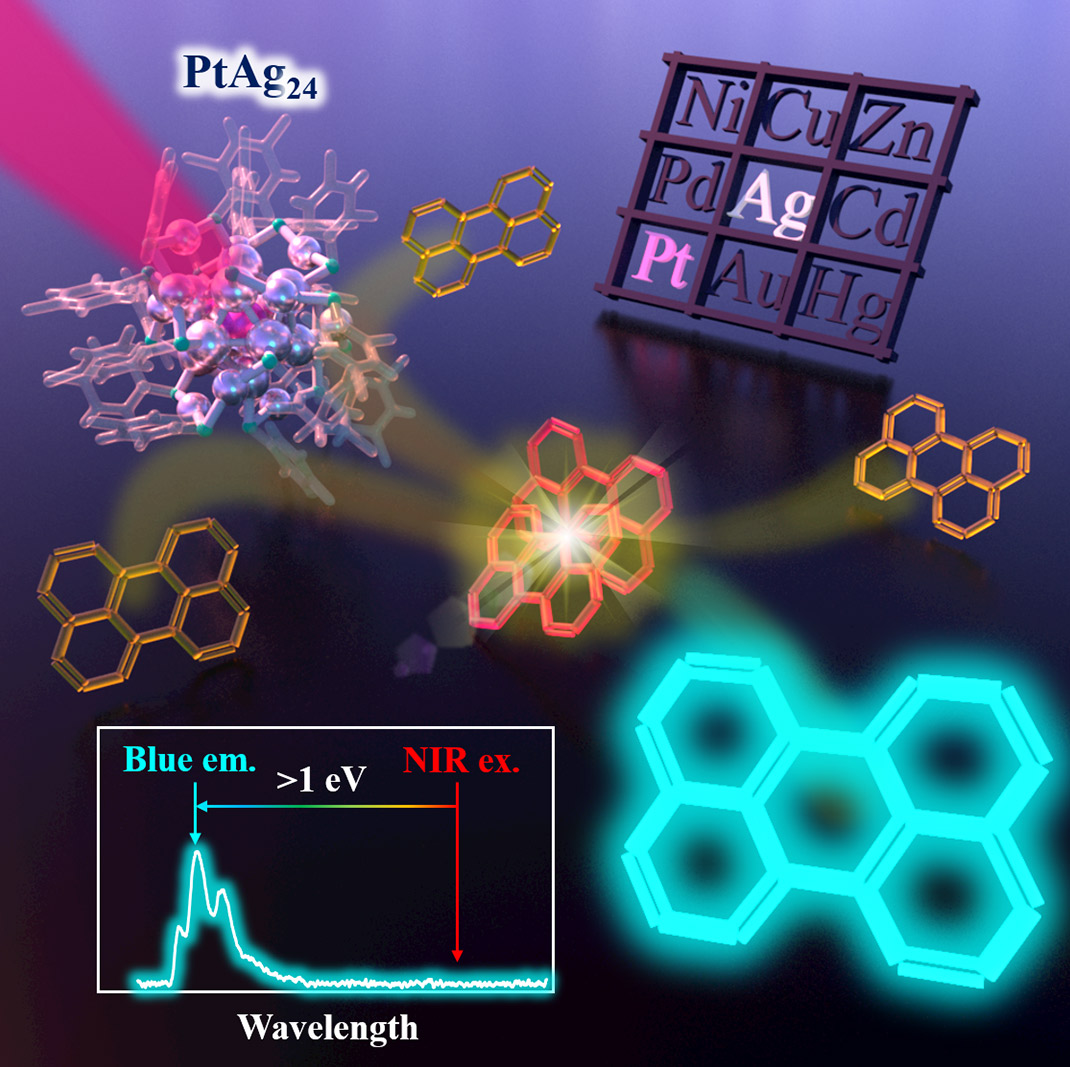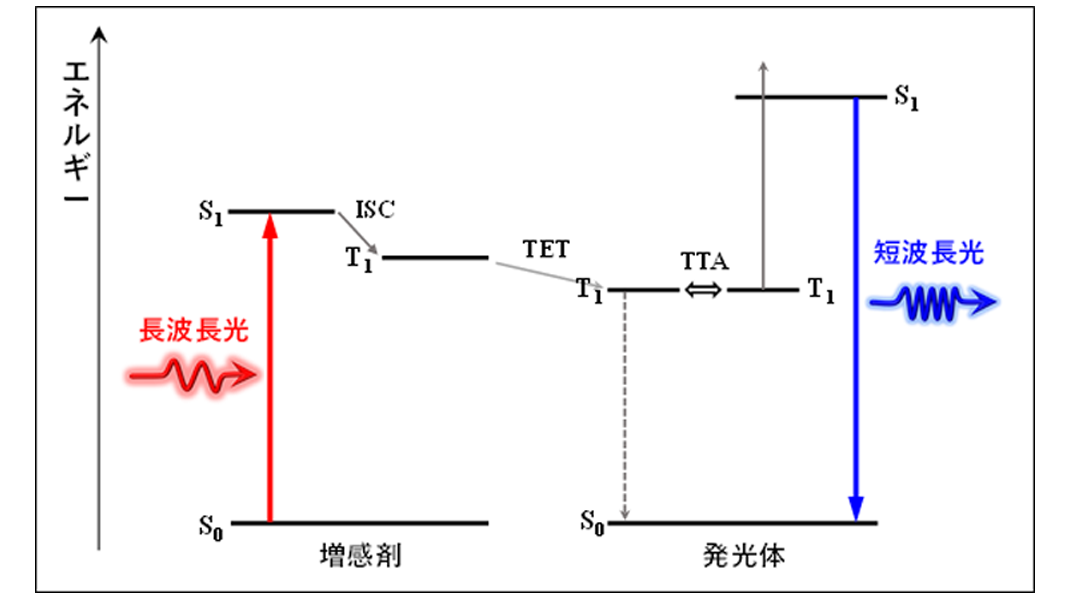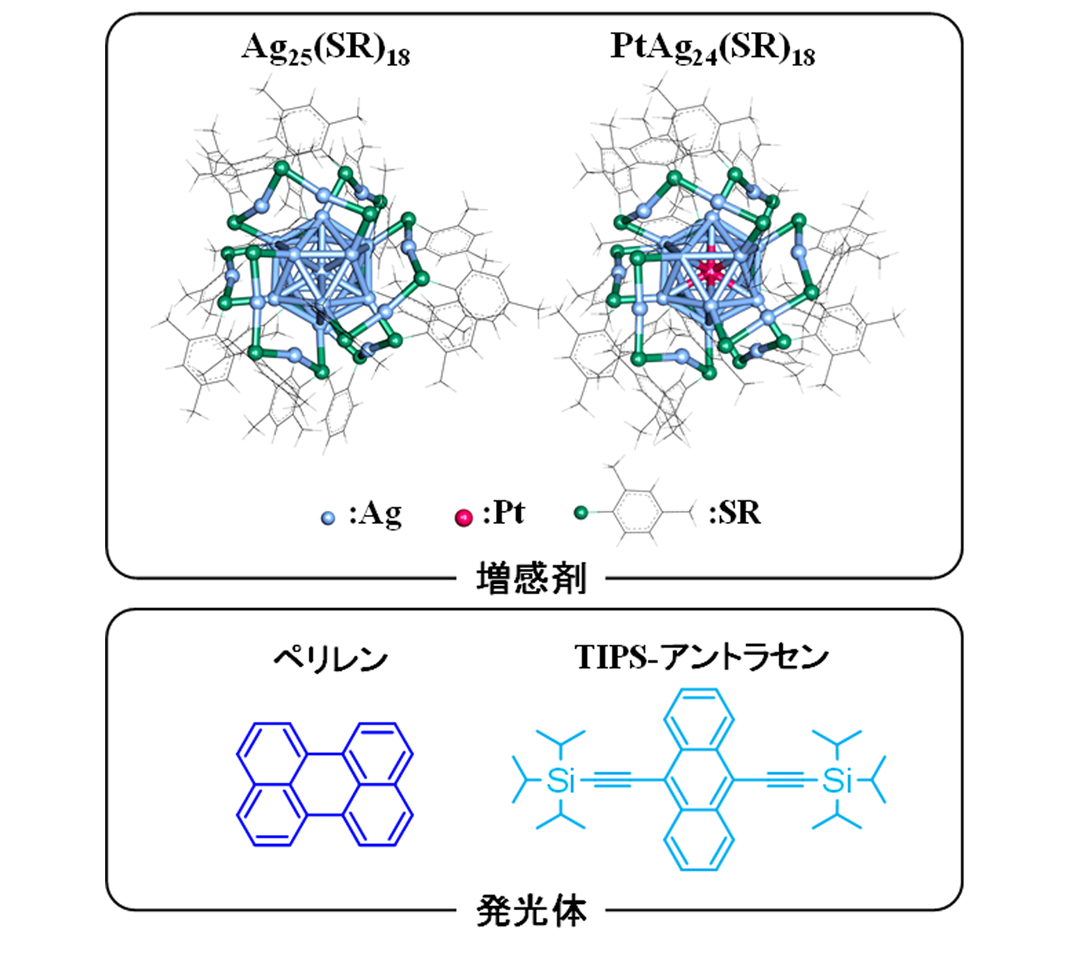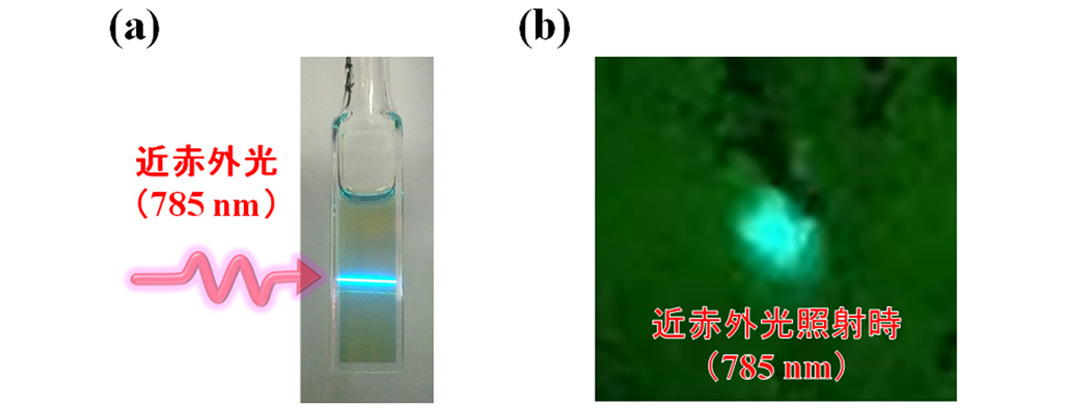Feb 19, 2021PRESS RELEASE
World's First Success in Using Metal Clusters for Near-infrared-to-visible-light Conversion
— Toward the Creation of Photon Upconversion Materials at Rikkyo University —
Keyword:RESEARCH
OBJECTIVE.
A research group led by Professor Masaaki Mitsui of the Rikkyo University College of Science has succeeded in observing the photon upconversion of long-wavelength light with low energy into short-wavelength light with high energy by combining metal clusters composed of dozens of noble metal atoms with fluorescent organic dyes (Figure 1).
Their research verified for the first time that metal clusters can be used as a sensitizer for photo upconversion and they gained new insights into the relaxation process of the excitation energy of metal clusters. The findings were published as a Communication in the high-impact journal "Angewandte Chemie International Edition" of the German Chemical Society, and the paper was selected for the frontispiece and as a Hot Paper.
Background of the study

Figure 1: Conceptual diagram of photon upconversion using metal clusters (PtAg24). PtAg24 clusters absorb near-infrared light (785 nm) and the accumulated light energy is transferred to the organic dyes, which eventually converts to blue light (wavelength ≤450 nm).
The mechanism of TTA-UC in solution is as follows (Figure 2). First, the base (S0) state sensitizer absorbs long-wavelength light to create an excited singlet (S1) state, which then goes through intersystem crossing (ISC) to reach the excited triplet (T1) state. Triplet energy transfer (TET) occurs between the T1 state sensitizer and the S0 state emitter, producing a T1 state in the emitter (triplet sensitization). Because the life of the emitter T1 state is relatively long, they meet to cause triplet-triplet annihilation (TTA), one returning to the high-energy S1 state and the other to the S0 state.

Figure 2: Principle of triplet-triplet annihilation photon upconversion (TTA-UC)
Findings

Figure 3: The metal clusters (sensitizers) and organic dyes (emitters) combined in this study
In TTA-UC, which uses organic dyes as sensitizers, heavy metal ions are introduced into the dye scaffold to promote intersystem crossing (ISC) and elicit efficient photon upconversion. Interestingly, however, only very weak upconversion fluorescence was observed with the Ag25(SR)18 clusters, which are composed of heavy Ag atoms. Therefore, the central metal atom of Ag25(SR)18 was replaced with a Pt atom, which is heavier than Ag. This led to strong upconversion fluorescence when irradiated with near-infrared light of wavelength 785 nm (Figure 4a).

Figure 4: Irradiation of a solution (a) and solid film (b) of mixed PtAg24(SR)18 and TIPS-anthracene with pale red near-infrared light (wavelength 785 nm) that difficult to see with the naked eye. In both, near-infrared light is converted into a strong blue light.
Future prospects
Article information
- Title: Single Platinum Atom Doping to Silver Clusters Enables Near-infrared-to-Blue Photon Upconversion
- Authors: Yoshiki Niihori, Yuki Wada, and Masaaki Mitsui
- Journal: Angewandte Chemie International Edition
- DOI: https://doi.org/10.1002/anie.202013725
About the research project
- JSPS grant-in-aid for scientific research (C) 20K05653
- JSPS grant-in-aid for young scientists (C) 20K15110
- Sumitomo Foundation grant for basic science research projects 170899